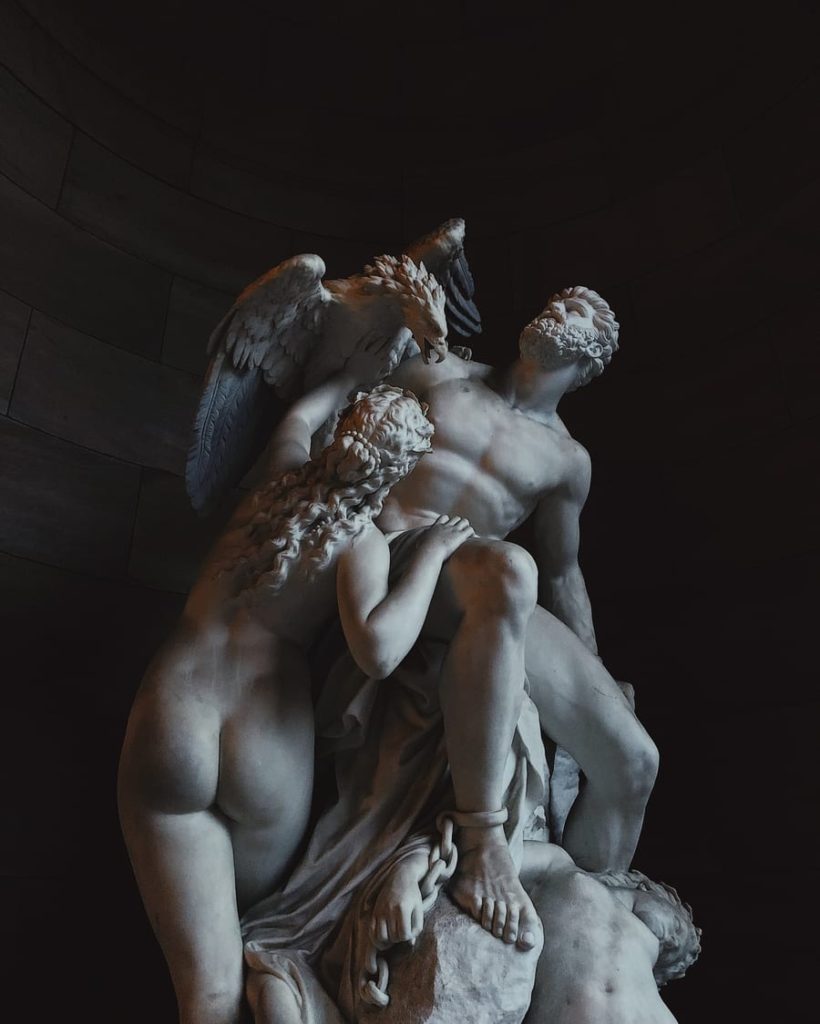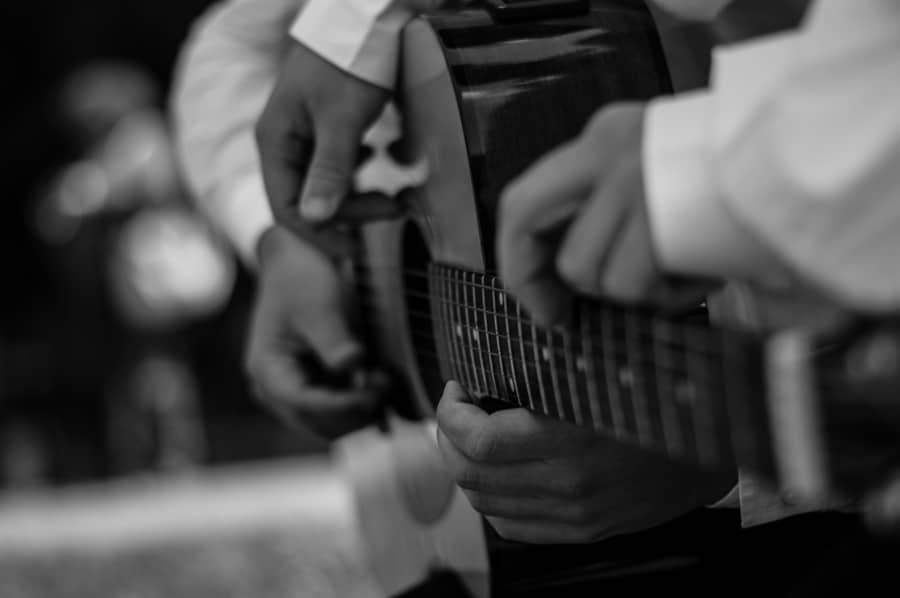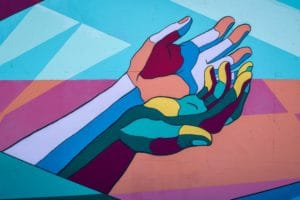So, you want to take the plunge into releasing your inner hero? Great. Today we’ll begin that journey by utilizing the Enneagram, film, arts, and psychology to look at our deep automatic patterns. This post is about the Peacemaker pattern. Also titled, “Everything you want to know about loving and growing as the peacemaker.”
An Overview of the Peacemaker Type
As I mentioned in the opening post to this series, we discover our inner hero by looking at the automatic and unconscious patterns
The First Law of self-awareness: if you can’t negotiate with
you r instincts, you are a slave to them.
When you are no longer awake to what drives you, you are a slave. Kinda like student loans…the longer you put them off the more they accrue. The longer we put off self-awareness the more encrusted and enchained our patterns will make us. Thus, noting these patterns will release you.
Not everyone is a peacemaker type 9. You could see each of the nine types as what Claudio Naranjo called, “specializations in the psyche.” That means, we all have the inner tendencies and patterns the Peacemaker character is known for, but not everyone lives in that space.
As Jung argued elsewhere, the best way to understand our psyche is to study how human beings have represented these patterns in myths and

The Enneagram and Mythology for Your Transformation
So, I was totally freaked out by something recently. Surprisingly one of the best ways to teach the Enneagram is starting at 9 and moving counter-clockwise to 1. Most teach it going the other way from 1 to 9.
Why is this scary? When taught in the correct order, each archetype or character pattern follows Homer’s Odessey, as Odesses moves through nine islands on his hero journey to get back home to Penelope. This epic (I mean it in the actual definition) was structured around these nine “lands.” Each land is an obstacle he must overcome.
Odysseus’ own journey home represents your inner journey toward personal growth to “the home of your true self.” [ref] Beatrice Chestnut, “The Complete Enneagram”[/ref] By true self we mean at SHU, that core aspect of you that is clear, calm, compassionate, centered, creative, and curious. Some have called it the 10th Type. We’ll explore that toward the end of the series. At that point we’ll look at different Christian traditions on this Self.
Whether you are a peacemaker or not, each type represents struggles and obstacles you must overcome. Shockingly, both the characteristics of the nine lands and those who populate them, parallel exactly the issues and traits of the nine personalities described by the Enneagram. (Quote) pg. 50.
Beatrice Chestnut, “The Complete Enneagram,” pg. 50.
It was Carl Jung who believed that we can best understand others through story and not merely in a textbook. He was an empiricist noting these patterns throughout clinical counseling experience. If you are interested in what literature and scientific testing the ENneagram has gone through click on Anna Sutton’s work here. For Jerome Wagner’s dissertation at Loyola and how he tested the model according to personality theory, click here. Whatever
Now, we’re ready to jump into the The Peacemaker Hero!
An Overview of the Peacemaker
If you’re a peacemaker you’ll want peace, harmony, and mutual positive regard. This type is known for its tendency to avoid conflict, although just because you don’t like conflict doesn’t mean it’s your type. Their ability to see various points of view makes it unlikely that they will be assertive with any one perspective. They prefer a relaxed demeanour or “going along to get along” and avoiding tensions between themselves and others.
The peacemaker type is the prototype for that response in all of us to tune out our inner knowing. We all have a tendency to fall asleep, stay comfortable, resist change and do what is easiest.
In a word, the peacemaker is the prototype for our universal instinct to go on “automatic and remain asleep to ourselves.” [ref]chestnut, 57[/ref]
They are adaptable, likeable, easy-going. They are oriented toward inclusion, consensus, and harmony.
The Peacemaker in Mythology
When Odysseus survives the war at Troy (Iliad) he first heads to the land of the Lotus-Eaters. On this land, they are an easy-going and friendly tribe. They live on “flowering-food,” called the Lotus. Because of this herb, they have lost all desire. They long for nothing and so do nothing. The lotus is a deadening herb. They are stuck at a fork in the road and can neither act nor choose a direction.
We usually
don’t become the hero in our own story by chance. It is the result of something waking us up to desire something more.
These lotus-eaters tempt Odysseus’s men to eat the flower and the men “forget the way home.” Odysseus finds them and takes the men back by force. He then ties them to the rowing benches so they can travel once more.
The land of the lotus-eaters represents the peacemaker’s pattern of falling asleep to their needs and wants. Without a desire for home and for change, its easy to want to stay “comfortable.”
If you want to be the hero God has called you to be, comfort will be your enemy.
The Peacemaker in Film
One of my favorite ways to teach this is by
Fight Club is a 1999 film based on the 1996 novel of the same name by Chuck Palahniuk. It was directed by David Fincher and stars Brad Pitt, Edward Norton, and Helena Bonham Carter. Norton plays the unnamed narrator, who is discontented with his white-collar job. He forms a “fight club” with soap salesman Tyler Durden (Pitt), and becomes embroiled in a relationship with him and a destitute woman, Marla Singer (Bonham Carter
The unnamed Narrator is an automobile recall specialist who is unfulfilled by his job and possessions. He finds catharsis by posing as a sufferer of testicular cancer and other afflictions in support groups, curing his insomnia. His bliss is disturbed by another impostor, Marla Singer. The two agree to split which groups they attend.
Norton’s Character is “Asleep” to what Drives Him: The Hero yet to be
Like Norton’s Narrator, the Peacemaker is in a sleep to self-awareness. When director “” designed this character, he said he represents “every man.” Asleep in a culture of consumerism, we deaden our senses with pleasure, entertainment….or in this case..IKEA furniture.
He continues this “numb” unfulfilled life by faking a medical condition (testicular cancer), and to seek support for his insomnia. At his lowest, he’s embraced by a large ex-steroid user with large breasts. Again, we’re left with a visceral image of being embraced by the artificial (a man with false breasts) for comfort.
The Hero Meets a Friend: Two companions stuck in the same hole
At
Every hero will find some comfort for the pain and even some release. But this only touches the false patterns. To embrace your hero journey you need a trickster and the shadow.
The Trickster: Exposing our inner chaos
The narrator enjoys big bob’s embrace for several weeks, until Marla shows up. A “faker” herself, she comes to this “only men testicular cancer support group” as a woman who has had cancer herself, or so she says.
The trickster is an archetype that like batman’s Joker, injects chaos into the story for significant change for the hero. Or, as in this case of Fight Club, reveals the chaos that’s already in Norton’s character, he just doesn’t want to admit it. In fact, she is him and he hates that in her.
In Jungian terms, we call this “negative shadowing” when we say how much we hate others but in reality, we are asleep to our same problems. It feels better to project onto someone else our own problems. That which we do not love about ourselves will come back to bite us.
See how Norton’s character hates her for the same things she’s doing.
Your hero journey will always face people who stir up strong feelings of anger. These are your tricksters and Shadows. People who represent your unowned self.
The Peacemaker’s Shadow: Enter the Teacher
On a flight home from a business trip, the Narrator meets soap salesman Tyler Durden. Tyler (played by Brad Pitt), represents his shadow, or what Freud called, the “id.” Tyler like Marla is con
Tyler has the qualities of the counter-phobic Six, also known as the Loyalist. He has a keen eye for danger, but rather than avoiding it, he resolves his fear by jumping right into it.
Tyler represents the
For the narrator, he undergoes transformation by embracing his shadow (in this case aggression). While Marla represents his negative shadow, Tyler becomes the narrator’s positive shadow. He looks up to Tyler and wants to model his life after his.
Violence and Values
Just a small note about the violence of this film. Sometimes people have mis-characterized the fighting as overt masculinity and cruel blood lust. The point the director and author were making has more to do with how men in a culture of peace have lost touch with the danger of life.
Marla and Tyler embraced death and unlike the Narrator, didn’t suppress that anxiety with consumerism and entertainment. By deadening our senses to death, we numb ourselves to everything else.
Every Hero must look at their shadows and tricksters to wake up. Feeling the pain is a step towards embracing the life God has for you.
Common Things Peacemakers Say:
Peacemakers support their core passion of laziness by holding these common core beliefs as “organizing psychological principles” [ref] Wagner, Jerome. Nine Lenses on the World: The Enneagram Perspective. Evanston, IL: Ninelens, 2010. [/ref].
- I don’t matter. It’s easier that way.
- What I think and feel isn’t that important. And that’s okay. Other people just feel more strongly about things than I do.
- It’s not okay to be angry or upset because that puts you at odds with others.
- It’s more important to be nice or peaceful than to be true to myself
- It’s not good to show anger because conflict destroys positive connections with others
- If I’m not present and accessible to others, I’m safe.
- I don’t know what I want, and it’s not that important anyway.
Have you said any of these things to yourself?
The Peacemaker Character Structure
The Peacemaker stands at the top of the Enneagram and belongs to the “body-based triad”. This type along with the Challenger (Type 8) and the Reformer (type 1) are associated with the core emotion of anger. Their focus of attention is related to order, structure, and control. While The Challenger type overdo their anger and the Reformer are at odds with their anger, Nines “underdo” their anger. Like a volcano, they lie asleep to their real feelings until they erupt occasionally.
Being the body- center of intelligence, they sense their environment “kinetically and have a primary connection to ‘gut knowing.’”[ref]Chestnut, 66.[/ref] Ironically the way their personality structure is, they can fall asleep to their primary intelligence. Since anger is a guttural experience, they can deny or lose touch with their fury till it leaks out in other passive ways or explodes, surprising others and bringing deep shame upon themselves. The shame is about losing harmony when losing connection to others.
Their coping strategy in the home was to over-adjust to others by forgetting what they want and harmonizing with those around them rather than owning their inner power.
A Peacemaker Example:
Mark was the youngest of four children. His father was a large, angry critical man with a deep voice and a perpetual scowl on his face. His mother was a type Nine who tried to maintain a sense of harmony in the family by taking on his father’s agenda and preventing his outbursts of anger. Mark learned early on that there were rules that had to be followed: his father’s rules. Self-determination and self-expression were allowed only within the limited constraints of what was acceptable to his father. To breach those boundaries meant being the object of his father’s criticism and anger.
Mark’s siblings – also took on their father’s agenda, and were all too happy to correct their youngest brother’s behaviour, grammar, opinions, and performance. His father’s anger disturbed him deeply and he could sense that it also disturbed his mother. Mark learned early on that preventing their father from getting angry helped him maintain his connection to both parents. The easiest way to do that was to go along with whatever his father wanted.”[ref] Chestnut, 67.[/ref]
The Peacemaker Sin and Shadow: Dante’s Sloth Tale
Another story that’s full of imagery and feeling is Dante’s “Inferno” from his trilogy “The Divine Comedy.” In it, the pilgrim travels both to the heights of heaven and the depths of hell. Written in the 15th century, “The Inferno” carries all the striking visuals and imagination of a medieval artist.
Dante’s underworld is emerged in symbols. In the world of the Inferno, those who lived in “sloth” wasting life day after day were punished. When the pilgrim finds these “slothful shades” he also finds “wrathful spirits” who “constantly tear and mingle each other.” The slothful are beneath the muddy waters. The pilgrim only knows they are there under the muddy river of Styx by the bubbles rising to the surface.
beneath the slimy top are sighing souls who make these waters bubble at the surface,; your eyes will tell you this – just look around
Bogged in this slime they say, “Sluggish we were in the sweet air made happy by the sun, and the smoke of sloth was smouldering in our hearts; now we lie sluggish here in this black muck!’ This is the hymn they gurgle in their throats but cannot sing in words that truly sound.” [Ref]Dante Alighieri. The Divine Comedy: Volume 1, Inferno. Translated by Mark Musa. New York: Penguin Books, 1971.[/ref] end quote
What may surprise you about the peacemaker is that many of them are quite productive and active. That leads us to an important point, that sloth is “laziness to self-awareness.” It is a motivation not just a behavior and it pertains to awareness, and only sometime to in-activity. Some Nines can even fill their lives with activities and networking to avoid themselves.
The Peacemaker’s Early Upbringing
When interviewing other Peacemakers they report their family upbringing was a place where their opinions weren’t heard enough. In this setting, the nine child felt “lost” being that they were overpowered and overlooked. They usually coped with this by specializing in an easygoing or accommodating attitude. In other setting Nines have been the mediator to difficult and conflictual parents or siblings.
If you were to plot their genogram, you’d notice that they can appear as the classic lost child, or the “no problem” child. Within their family environment their troubles were due to following a peer group and suppressing their desire through food, games, tv, or books. [ref]Carolyn Bartlett, “The Enneagram Field Guide: notes on using the Enneagram in Counseling, Therapy, and Personal Growth[/ref].
The Peacemaker and Psychiatry: Defenses,Traits, Disorders, and Psychopathology
At SHU, we believe that God is at work in the sciences. Psychiatry is one of those hallmarks. As I mentioned in the beginning post to this series, each hero has defenses and patterns that can keep them from facing the unknown and finding their inner transformation.
For the peacemaker, their soul operates by something called, “dissociation.” This is their primary defense mechanism that holds their Ego structure in place. An ego structure is our healthy perception of ourselves. Having meaningful structures in our mind such as healthy thoughts, a healthy range of feelings, and acting on them appropriately give us a healthy ego structure.
In Christian language ego structure is a balancing act between overt pride and false-humility. You need to know who you are in Christ, but not think too much of yourself or too little.
Defense mechanisms are like keeping a ship together with rusted metal and duck-tape. These are patterns that served us at one point but no longer help us anymore. They’ve become encrusted with archaic perspectives.
Dissociation is the numbing of oneself to avoid uncomfortable thoughts, feelings, and Behaviors, as well as difficult tasks, conflict, anger, or pressure by merging with others and engaging in routines that require little attention and provide maximum comfort.
This usually takes the shape of reading, watching TV, eating, or doing crossword puzzles.
In psychiatry they also note something called, “Psychological inertia.” Professor Giannini of the University of Chile wrote, “what saint Thomas, Gregory the great, Saint Isidore, Cassi an and others designated as ‘accidia.’” [ref]Claudio Naranjo, Character and Neruosis.[/ref].
Accidia or “no-care” (from the Greek) refers to a laziness of the psyche and of the spirit, rather than a tendency to in-action. Such spiritual laziness could be seen in our forgetfulness of God or a deafening to the spirit, a kind of “spiritual coarsening.”
In psychology, accidia manifests as a loss of inferiority, a refusal to see, and a resistance to change.
Every hero begins the same way, resisting change and stuck in old patterns.
According to the DSM (Diagnostic and Statistical Manual for Mental Disorders), the Peacemaker at unhealthy levels resembles the “dependent personality.” In order to be diagnosed with dependent personality, one must be doing at least 5 of these 9 things, as well as other factors:
- Is unable to make decisions without an excessive amount of advice or reassurance from others
- Allows others to make most of his or her important decisions, e.g., where to live, what job to take
- Agrees with people even when he or she believes they are wrong, because of fear of being rejected
- Has difficulty initiating projects or doing things on his or her own
- Volunteers to do things that are unpleasant or demeaning in order to get other people to like him or her
- Feels uncomfortable or helpless when alone, or goes to great lengths to avoid being alone
- Feels devastated or helpless when close relationships end
- Is frequently preoccupied with fears of being abandoned
- Is easily hurt by criticism or disapproval.
Whatever it means to be spiritually healthy, it isn’t in a dependent personality.”
Other DSM Traits of the Peacemaker
- Resignation – to given up oneself and absolve oneself from life.
- Generosity – Kind, good natured, helpful, and heartiness. There is a jolliness to them for taking oneself lightly. Likes children, fond of animals, enjoys gardening. A good listener, ready to be helpful, sympathetic, and comforting, perhaps commiserating.
- Ordinariness– Their self-concept can be low, their concern about shinning or excelling also low. There is a living through others vicariously. Lost identity becomes an identity by “symbiosis with family, nation, party, clubs, team, and son.”
- Robotic Habit-Boundedness – Over Adjusted personalities are creatures of habit. They are bound by custom, and regularity. They want to preserve their balance. The Robotic nature means they have a tendency to excessive attachment to the familiar.
- Distractability – distractable, confused, and sometimes say they “have a bad memory.”
Three Types of Peacemakers: Appetite, Participation, Fusion/Union
Most people mis-type others and themselves when using this model. That’s because for each type, there are 3 specific sub-types as understood from 3 separate instincts.
You could think of these as “animal instincts.” We all have a need for safety, to belong to a group, and for intimacy with another person .
The self-preservation instinct activates when we feel our safety is needed. It focuses attention on and shapes behaviour around issues related to survival and material security. Do I have enough resources, what dangers can I avoid, how do I maintain a basic sense of structure and well-being?
Our social instinct activates when we need to belong, be recognized, and maintain relationships. This is what “drives us to get along with the herd’ – our family, community, and the groups we belong to. It also relates to how much power or standing one has relative to the group.
The Sexual instinct or “one-to-one” activates when issues related to the quality and status of relationship with specific individuals come up. This type of instinct helps us by directing our energy toward the achievement and maintenance of sexual union, interpersonal interactions, and bonding.
All of these are present in each type, but for nature or nurture we are usually governed by one specific sub-type. In total, there are 27 different types of hero’s out there and many of them seem very much alike.

1st Type: Self-Preservation – Appetite and Hording
The Self-preservation Peacemaker is called “Appetite” They merge with the comfort of routine and rhythmic or pleasant activities as a way to not pay attention to themselves; often they have collections of multiple versions of similar items to which they have sentimental attachment. [ref] Ginger Lapid-Bogda, PhD, “The Art of Typing: Powerful Tools for Enneagram Typing” Santa Monica, Ca: The Enneagram Business Press, 2018.[/ref]
Here are some things they say:
- “No one perceives my needs”
- I have to be serious for them to love me”
- I shouldn’t bother anyone or others
- No one recognizes me
- I’m not sexually attractive to anyone
- I mustn’t do ugly things
- I shouldn’t provoke anyone
- I can’t show what I want
They tend to be active and intuitive and express a subtle strength. They can be more irritable and stubborn than the other types of peacemakers. It can be very hard for them to accept that another person is right. They also live a life of excess more than other peacemakers. While they don’t angry often than can erupt with the fury of a peacemaker for those that cause them problems.

2nd Type: The Social Instinct – Participation (countertype)
Each Peacemaking Hero has a counter-type. That’s a type that doesn’t act like the typical Peacemaker. This pattern is called participation that merge with and work extremely hard on behalf of a group, organization or chase that they support or belong to as a way of not focusing on themselves. Often they are confused with The Achiever (type 3 hero) for their industriousness and unending involvement in social participation.
Some Social peacemakers have said these are their “crazy ideas:
- Adapt myself because I cant’ do anything
- In the face of confrontation, indifference. That’s where strength lies; that’s the weapon of power
- If I confront, I’ll end up alone.
This type of Peacemaker is light-hearted, social, fun-loving character who wants or desires to be included in a group. They sacrifice whatever is necessary to meet the needs of the group as a way of earning membership. They work twice as hard to support the group to make sure that they themselves belong.
Social nines can be workaholics. They don’t show their pain and they don’t burden others. Nor do they show how much energy it takes to devote themselves to the group.
In many ways the Social Peacemaker makes the best type of leaders in that they are good, unselfish people who strive to satisfy the responsibility given them. They like to control things and they like to talk…like a lot.

3rd Type: The Sexual Peacemaker – Fusion
Also called the “one-to-one” sub-type, these peacemakers merge with one other person (single individual rather than a group) as a way of not paying attention to their own thoughts, feelings, needs and desires. Sometimes they are confused being the “Helper” hero.
Some Crazy ideas they are reported saying:
- When we don’t want it see or acknowledge something about ourselves, and someone tells us, we experience it as an attack and we defend ourselves.”
- I have to give in to keep them by my side.
- I have to keep the peace at all costs
- If I express my need they won’t love me
- I don’t have the right to ask for anything
- If I ask for anything, I’m bothering.
- We are right.
Sexual Peacemakers express their laziness by merging with the important people in their lives. They can unconsciously take on the attitudes, opinions, feelings of others, often because it feels too hard to stand on their own.
This creates a problem in real intimacy since a healthy relationship requires both members stand on their own two feet. Often they are confused with The Artist (type 4) and the Helper (type 2). Unlike the Artist though, This peacemaker type is other-referencing, meaning they always look to others for identity. Unlike the Helper, Sexual peacemakers don’t look to create an image for themselves. This type of Peacemaker is shy, kind, gentle and not very assertive.

The Peacemaker Superpower and Achilles Heel
Every type has a superpower, something they can do greater than the other types. The Peacemaker superpower is in providing consistent support to you and others that makes you feel included and honored.
Their spiritual dimension is that of “Holy Love”: know that there is an underlying love and harmony in the world based on unconditional regard, respect and appreciation. This combined with the state of being so present that you are fully awake and know exactly the right action to take. [ref]Ginger Lapid-Bogada, “The Art of Typing: powerful Tools for Enneagram Typing,” 2018, 25.[/ref]
Like all parts their greatest strength is also their greatest weakness. The Achilles heel of the Peacemaker is false harmony, that is presuming that no conflict exists when in reality it does. This means they’re fatal flaw is over adjusting to others and having a hard time noticing their own desires and asserting their own agendas. This creates a psychological ego structure interference with their spiritual dimension. When they believe they don’t matter enough to express themselves, and merge with others, they forget themselves in the process.

Nines and Therapy
Many nines come to therapy. Most often they seek help for relationship conflicts, depression, anxiety and angst about life direction. While they have a tendency to sacrifice their own priorities over time, this generates anger, resentment and deep sadness.
Sometimes they express their anger passive-aggressively with mean jokes, sideways comments, or just by not listening. In couples’ work, the partner of a nine could be overtly angry while the Nine appears amiable and a bit “bewildered.”
Like any person who passively refuses to take responsibility for their emotions, nines can mysteriously stir them up in others.
Carolyn Bartlett in “The Enneagram Field Guide,” 143.
What Works in Therapy?
Some like Tom Condon (Enneagram expert since 1979), has described Nine’s as presenting therapists with “Amiable defeatism.” That is, previous therapists have failed them and they assume that more therapy will not work. Tips that help you in your counseling of Nines:
- Ask the Nine client what has not worked in the past so you can predict possible transference/counter-transference. This way, you could possibly prevent past mistakes.
- Offer careful evaluation of their progress. As one Peacemaker put it:
Over the years I’ve worked with about eight different psychotherapists, typically over a period of a few months each. My experience has been uniformly negative. After a few weeks of therapy – the “getting to know you” phase – the therapist begins to challenge my beliefs. Eventually, I give up and quit therapy. What I would like form psychotherapy is to feel optimistic, competent, and “OK,” rather than feeling like an emotional mess.”
Many nines unconsciously believe they cannot have what they want. Thus, failing in therapy can be deep and disastrous for them. Nines have also been shown to develop keen insight that leads to little action. Which leads us to..
3. Don’t despair, inertia is part of their survival guide. It’s normal for a Nine to banish all insights from their awareness or even memory. Stay hopeful as many therapists have dwelt with this by getting to deep issues and seeing insights with little change. Therapists often feel confused and thwarted by this repeated pattern.
4. Remember to sufficiently challenge them to face their anger and avoidance
The therapy hour can be another space where the Nine can simply fall asleep.
- “I wish psychotherapists would realize that what I need, as a Nine, is to start taking action and responsibility for my life, rather than waiting for something to ‘just happen.’ It’s too easy for me to ignore problems and hope they just go away.” [ref] Bartlett, 144.[/ref]
- “You can go over things in therapy, and it becomes ritualized with no progress.”
- “Insight alone is not going to help.”
Nines need to be challenged, but realize they have to move at their own pace.
5. Play the devil’s advocate. Ask them: “It seems like you’re going along with this, but I’m wondering if this is really working for you.”
6. Help them to identify and name their own problems and make their own solutions. As one Nine put it: “IF I have ownership of something and have thought of it myself, then I want to carry through with it.”
7. Don’t let them take care of your needs! Nines try to create a harmonious relationship with the therapist, not being the problem child or in this case the problem client. In this case try asking:
- “What are you doing with your grief over divorce?
- “What is it like to be here now in therapy?
Try to keep them focused by probing, staying with their issues, and doing family history to give them insights prior to the losses.
8. Don’t Merge with them
Nines will try to create a harmonious relationship with you the counselor by merging with you. This is probably the main reason why they’re coming to you, because they can’t stop doing to everyone else. “I would merge with the therapist so she would feel comfortable so I would be comfortable.”
Therapists have noticed that they too will feel sleepy, distracted, overly comfortable. When this happens, then you have merged with them! Utilize some basic grounding techniques and start over.
What Therapy Interventions Bring Change for a Nine?
1.Brainstorming and Visualizing Virtual Realities
Nines need to learn “future forecasting,” which is a technique used in meditation in which someone imagines and then experimentally “tries on” various possible futures from the safety of the present. Here Nines can see what they don’t want. Seeing their inaction producing a negative future gives them new impetus for action and change. Here you can counsel them and say, “now where do you want to go instead?”
Another key is to have them envision the old man or old woman they will become. Other Nines said, “Especially exciting to me when I am asked what I’m passionate about rather than just what do I want.” Here you can help them distinguish between passion and wants as well as true harmony vs “mediocrity in the service of harmony.”
When they lose focus you can also ask them, “is there something you aren’t talking about today that maybe you need to?”
2. Journaling and Self Observation
Have them write about their daily experiences in a journal, especially noting when and how they forgot themselves. This journal activity helps them remember. Most of all it helps them write and remember what they are most “passionate” about. One Nine said:
“Writing about it helped me remember that I didn’t think about what I wanted when I agreed, I just wanted to please the other person. Now I’m starting to observe my feelings before I agree, avoiding my tendency to give myself away, which leads to resentment and low self-esteem.”
If they aren’t into writing you can also request they use painting and drawing. Try drawing or writing with their non-dominate hand.
3. Feeling Grief
Go back to their childhood origins. As Nines get in touch with their childhood they often feel the sadness and loss experienced there. Most of all Nines experience change when they share this loss with a very patient counselor. Many find it “curative” when a therapist prizes them the whole process through.
4. Conjoint Work
Nines going to couples counseling require a lot of observation of their non-verbal behavior. When Nines (especially sexual nines) merge with family members it can seem like they disappear. Point out all the times they are merging with their partner, becuase it is this merging that is costing them their relationship.
During couples counseling, ask the Nine to not touch the other partner, so that ehy can be clear about what they want and desire and keep from merging with their partner. Some nines find solitude helps them. “When I spend time by myself I start to separate from the energy of others.”
5. Recognizing and Expressing Anger
Anger is something Nines suppress, but if the therapist suppresses it too, then the relationship could get stuck in a non-productive series of sessions. Consider utilizing methods that help them to become aware of their body: Reichian, Hakomi, NLP (Neuro-Linguistic Programming) and other breathing work. When a Nine gets in touch with their body they can relate to the anger differently.
If you are helping them to acknowledge their deep seeded anger, they may move back into the “spaced-out” state. Nines report that when they are in their body, they are not in a spaced-out state anymore.
The Peacemaker in Culture and Nationality
Certain cultures and nations have a tendency to live into the Peacemaker pattern. Cultures that value harmony and bureaucracy shape people of all types to act more like this relaxed character.
The country of nines often used is that of Mexico. The image of wearing a sombrero, taking a siesta in the afternoon. Some have equated Austria with their indecisiveness between Hitler and the Allies. Others have noted how much tourists enjoy the naturalness of the Austrian Gemutlichkeit but faked to notice their passive aggressiveness toward foreigners.
Another possibility are Asian contexts where families prioritize harmony over independence and autonomy. Working in healthcare, I consistently see Chinese patients struggle to make their medicinal discisions without the concient of their family.
Although not every person in Mexico, Austria, or China are Peacemakers, its remarkable how the culture values harmony and shapes those in it.
Other Images of the Peacemaker: Animals and Colour
Some have notice the slow to action peacemaker in the Elephant who stands around in the zoo and isn’t especially agressive. Elephants are known for having highly gentle dispositions but can remember deep offended. Other animals are the sloth, whales and the dolphin.
Gold is their colour. In ancient times it was the colour of the gods, of kings and saints. But it is the “golden age” and the “golden city” that represent images for peace “happiness, harmony, and fulfillment” [ref] Richard Rhor, “The Enneagram: A Christian Perspective,” CrossRoad Publishing, IL, 1999.”[/ref]
Tell us about you!
Are you the Peacemaker Hero? Comment below. What are some other movies you’d like us to review?








